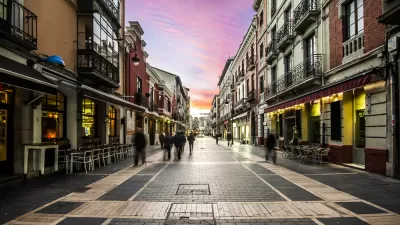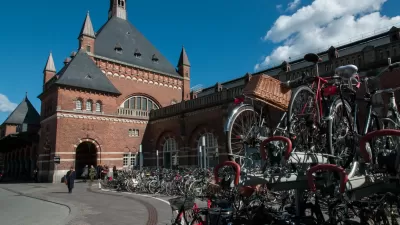Copenhagen wasn't always the "pedaler’s paradise" that it is today. Through the early twentieth century the Danish capital embraced the bike, but after WWII it experimented with American style development. How did the city get back on track?
John Greenfield discusses Copenhagen's history of multi-modalism with Danish Cyclists’ Federation director Jens Loft Rasmussen and project manager Mai-Britt Kristensen. Despite is global reputation for bike-friendliness, the path to pedaling paradise wasn't always clear. As Rasmussen describes: "When the bicycle was introduced in Denmark it became very popular. The Danish Cyclists’ Federation was founded in 1905. And during the Second World War you couldn’t get gasoline, so everybody used their bikes. But after the war we introduced the American lifestyle. In the Sixties people moved to new suburbs and kept their jobs in downtown Copenhagen. So how could they get from their new house in the suburbs to their job in central Copenhagen? In their car of course."
"The modal split in 1970 was about ten percent biking. [To put this in perspective, the mode share in Portland, Oregon, America's most bike-friendly major city, is roughly six percent.] But then we got the oil crisis. We had been totally dependent on gasoline from the Middle East and when it stopped the government had to introduce car-free Sundays. And then people realized that the car-free Sunday was the best day of the week, or some people did. They joined the Danish Cyclists’ Federation and there were huge demonstrations in Copenhagen. The attitude of the city government changed step-by-step from building highways to the center of Copenhagen to realizing that bicycling was a very important part of the transportation picture."
With the bike modal split at 35 percent currently, Rasmussen and Kristensen go on to describe how the city plans to expand its bike infrastructure and keep that share rising.
FULL STORY: Danish History: How Copenhagen became bike-friendly again

Alabama: Trump Terminates Settlements for Black Communities Harmed By Raw Sewage
Trump deemed the landmark civil rights agreement “illegal DEI and environmental justice policy.”

Study: Maui’s Plan to Convert Vacation Rentals to Long-Term Housing Could Cause Nearly $1 Billion Economic Loss
The plan would reduce visitor accommodation by 25% resulting in 1,900 jobs lost.

Planetizen Federal Action Tracker
A weekly monitor of how Trump’s orders and actions are impacting planners and planning in America.

Waymo Gets Permission to Map SF’s Market Street
If allowed to operate on the traffic-restricted street, Waymo’s autonomous taxis would have a leg up over ride-hailing competitors — and counter the city’s efforts to grow bike and pedestrian on the thoroughfare.

Parklet Symposium Highlights the Success of Shared Spaces
Parklets got a boost during the Covid-19 pandemic, when the concept was translated to outdoor dining programs that offered restaurants a lifeline during the shutdown.

Federal Homelessness Agency Places Entire Staff on Leave
The U.S. Interagency Council on Homelessness is the only federal agency dedicated to preventing and ending homelessness.
Urban Design for Planners 1: Software Tools
This six-course series explores essential urban design concepts using open source software and equips planners with the tools they need to participate fully in the urban design process.
Planning for Universal Design
Learn the tools for implementing Universal Design in planning regulations.
Caltrans
Smith Gee Studio
Institute for Housing and Urban Development Studies (IHS)
City of Grandview
Harvard GSD Executive Education
Toledo-Lucas County Plan Commissions
Salt Lake City
NYU Wagner Graduate School of Public Service





























